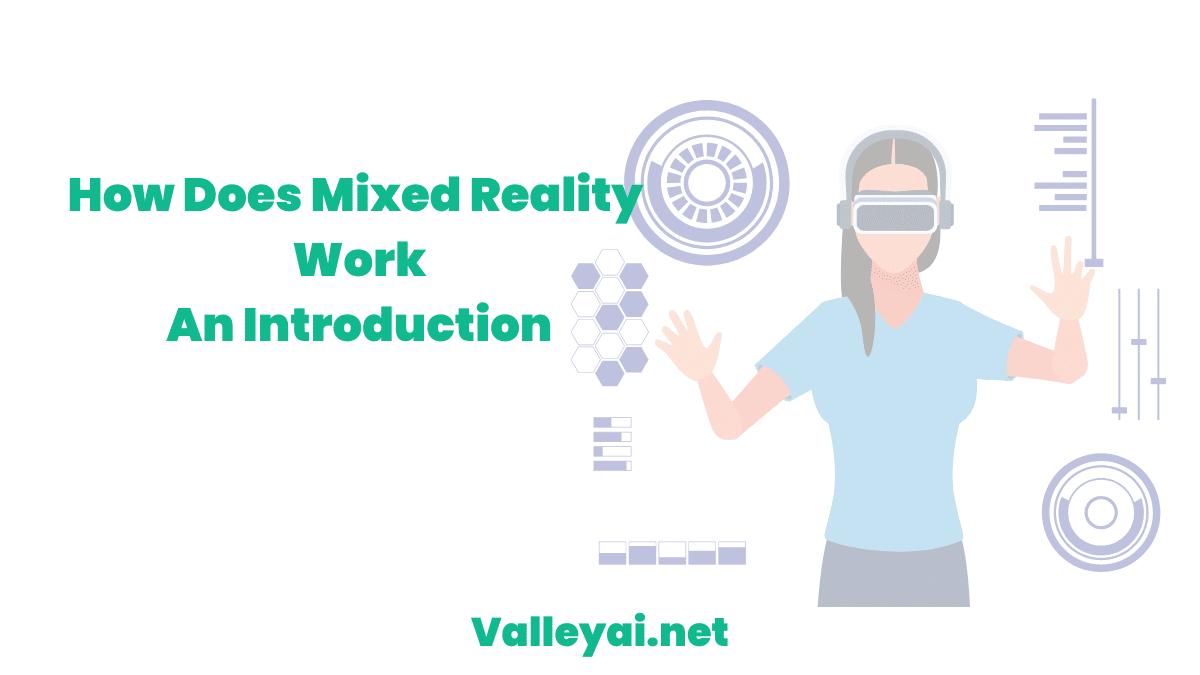Mixed reality (MR) is a relatively new technology that blends elements of virtual reality (VR) and augmented reality (AR) to create a new form of immersive experience. MR has the potential to revolutionize the way we interact with digital content, enabling us to seamlessly blend the physical and virtual worlds.
In this article, I will explain what mixed reality is, how does mixed reality work, and its potential applications.
Introduction to Mixed Reality
Mixed reality, also known as hybrid reality, is a technology that combines elements of both virtual and augmented reality to create a seamless blend of the physical and virtual worlds. In mixed reality, digital objects and information are overlaid in the real world, creating a new form of immersive experience.
Understanding the Different Types of Mixed Reality
There are three different types of mixed reality:
- Augmented Reality (AR): In augmented reality, digital content is overlaid in the real world. AR enhances our perception of the real world by adding digital elements to it.
- Mixed Reality (MR): Mixed reality combines virtual and real-world elements to create a new form of immersive experience. MR allows users to interact with virtual objects as if they were part of the real world.
- Virtual Reality (VR): In virtual reality, users are completely immersed in a digital world, where they can interact with digital objects as if they were real.
- Extended reality (XR): XR is a catch-all term that includes all forms of reality that combine real-world and virtual elements. This can include AR, MR, and VR, as well as other emerging technologies.
How Does Mixed Reality Work?
Mixed reality works by using a combination of hardware and software to create a new form of immersive experience. The technology uses sensors, cameras, and displays to track the user’s movements and create a virtual representation of the real world.
The process begins by capturing real-world images and translating them into a virtual environment. This is achieved by using a combination of cameras and sensors, including computer vision technology, to capture the user’s surroundings and create a 3D model of them. The 3D model is then combined with digital content to create a seamless blend of the physical and virtual worlds through advanced display technologies and AR experiences in the user’s physical environment.
To achieve this seamless integration, mixed reality uses a technology called spatial mapping. Spatial mapping allows the system to identify the user’s environment and map the digital content onto it, creating a realistic and immersive experience.
The Hardware Required for Mixed Reality
Mixed reality requires specific hardware to function properly. This hardware includes:
- Headset: A mixed reality headset is the primary hardware required for mixed reality. The headset is used to display the virtual content and track the user’s movements.
- Sensors and Cameras: Sensors and cameras are used to track the user’s movements and create a 3D model of the environment.
- Controllers: Mixed reality controllers are used to interacting with virtual objects and navigating the virtual environment.
The Software Required for Mixed Reality
Mixed reality also requires specific software to function properly. This software includes:
- Spatial Mapping Software: Spatial mapping software is used to identify the user’s environment and map the digital content onto it.
- Virtual Content Creation Software: Virtual content creation software is used to create digital content that is overlaid in the real world.
Examples of Mixed Reality Applications
Mixed reality has a wide range of potential applications across different industries. Some of the most common applications include:
- Gaming: Mixed reality can be used to create immersive gaming experiences that blend the physical and virtual worlds.
- Education: Mixed reality can be used to create interactive educational content that enhances the learning experience.
- Architecture and Design: Mixed reality can be used to visualize architectural designs and simulate the impact of design decisions.
- Healthcare: Mixed reality can be used to create simulations and training programs for healthcare professionals.
- Manufacturing: Mixed reality can be used to create virtual assembly lines and simulate manufacturing processes.
Potential Benefits and Drawbacks of Mixed Reality
Mixed reality has the potential to offer many benefits, including:
- Enhanced Immersion: Mixed reality can provide a more immersive experience than traditional forms of media.
- Increased Productivity: Mixed reality can increase productivity by allowing users to interact with digital content more naturally.
- Enhanced Learning: Mixed reality can enhance the learning experience by providing interactive educational content.
However, mixed reality also has some potential drawbacks, including:
- High Cost: Mixed reality technology can be expensive, making it inaccessible for some users.
- Limited Content: Mixed reality is still a relatively new technology, which means that there is currently a limited amount of content available.
- Potential for Motion Sickness: Some users may experience motion sickness or discomfort while using mixed reality technology.
The Future of Mixed Reality
Mixed reality has the potential to revolutionize the way we interact with digital content, and its potential applications are vast. As technology continues to evolve and become more accessible, we can expect to see an increase in the adoption of mixed reality across different industries.
Conclusion
Mixed reality is a new form of immersive technology that combines elements of both virtual and augmented reality to create a seamless blend of the physical and virtual worlds. By using a combination of hardware and software, mixed reality allows users to interact with digital content as if it were part of the real world. The potential applications of mixed reality are vast, and as the technology continues to evolve, we can expect to see it being used across a wide range of industries.
FAQs: How Mixed Reality Works
What is the difference between augmented reality and mixed reality?
Augmented reality overlays digital content onto the real world, while mixed reality combines both virtual and real-world elements to create a new form of immersive experience.
What hardware is required for mixed reality?
Mixed reality requires a headset, sensors and cameras, and controllers to function properly.
What software is required for mixed reality?
Mixed reality requires spatial mapping software and virtual content creation software to function properly.
What are some potential applications of mixed reality?
Mixed reality has potential applications in gaming, education, architecture and design, healthcare, and manufacturing.
What are some potential drawbacks of mixed reality?
Some potential drawbacks of mixed reality include high cost, limited content, and the potential for motion sickness.
Admin
My name is Kaleem and i am a computer science graduate with 5+ years of experience in AI tools, tech, and web innovation. I founded ValleyAI.net to simplify AI, internet, and computer topics while curating high-quality tools from leading innovators. My clear, hands-on content is trusted by 5K+ monthly readers worldwide.

